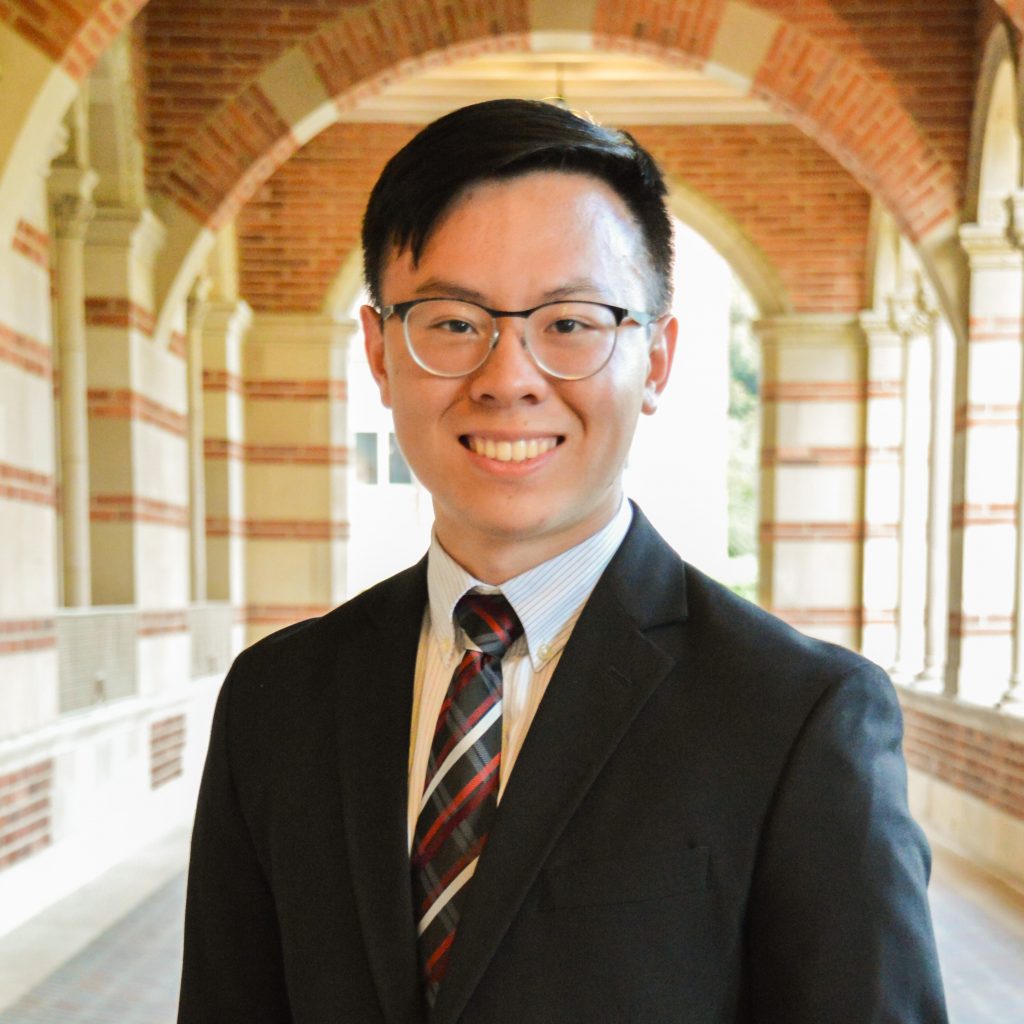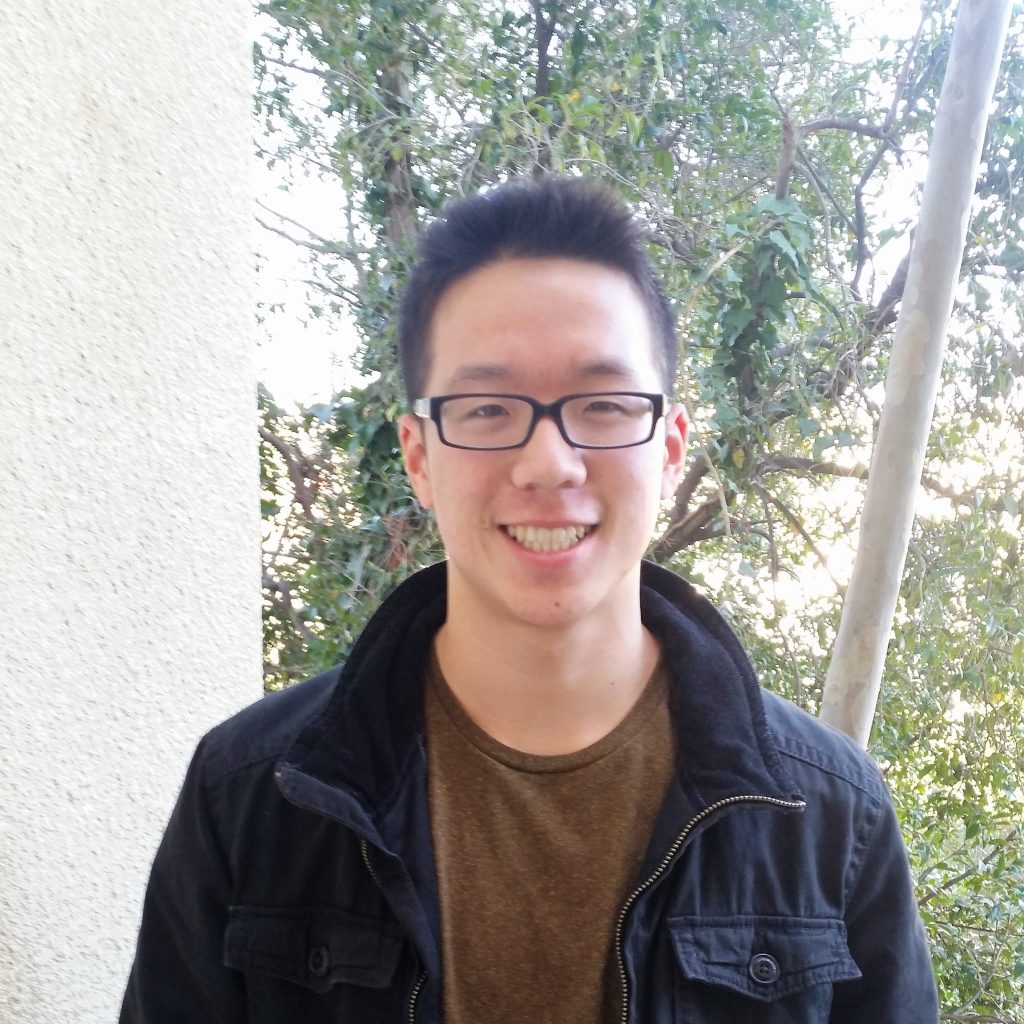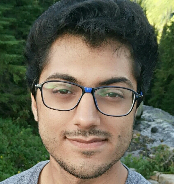
Oluwatomi Balogun
Auditing Attention: The Correlation between Social Media Usage and Attention Span
Mentor: Bran Ferren
Year: Senior
Major: Communications
This research project investigates the impact of social media usage on attention span. The research aims to elucidate the following concepts: the effects of digital media on cognitive functioning, the differences and similarities between the individual yet interdependent dimensions of attention, and the merits and perils of social media and living in a digital society. The project’s methods include running a correlational study that explores the relationship between a subject’s social media use (measured as a unit in time in hours) and their score on a corroborated test of attention with high construct validity. The final product of this research will be a paper outlining the study and its implications.
Results: Oluwatomi Balogun’s Quad Chart

Alexander Chen
The Applicability of Deep Learning in the Diagnosis of Stroke
Mentor: Michael Silton
Year: Sophomore
Major: Computational and Systems Biology, Bioinformatics Minor
Stroke is a serious issue across the world, leading to disability or death. Annually 15,000,000 people suffer from stroke, 5,000,000 of which become disabled and 5,000,000 of which die. My research attempts to alleviate some of this harm by enhancing the stroke diagnosis process using machine learning on MRI. The project includes the binary “stroke” or “no stroke” classification of MRI data, and extraction of useful information from MRI data to develop AI software to diagnose stroke from the raw MRI data. This will promote a more effective selection of treatment for patients.
Results: Alexander Chen’s Quad Chart

Abineet Das Sharma
Flying a Drone Reliably over the Internet
Mentor: Leonard Kleinrock
Year: Senior
Major: Computer Science
Drones today primarily fly over radio telemetry. My goal is to completely migrate the telemetry, as well as video streaming and processing, to the ground station over the Internet. My research goal is to attempt to prove that drones can fly over the internet, and handle themselves reliably when out there is a loss of connection. The drone would connect to the internet and communicate with a ground station over it, and hopefully be smart enough to handle situations where it loses connection temporarily.
Results: Abineet Das Sharma’s Quad Chart

Canaan Howard
Augmented and Virtual Reality Technology in Healthcare
Mentor: Roy Doumani
Year: Senior
Major: Psychobiology
This project’s focus for the year will be exploring the potential applications of virtual and augmented reality in the healthcare space, primarily investigating how these technologies could be used to improve both caregiver and patient experience. Research includes interviews with healthcare technologists and practitioners, and reviews of existing healthcare technologies to discover a space where it would be practical to use AR or VR without trying to simply use the technology for the sake of using it. The final deliverable will build from the previous quarters’ research to develop some simple prototypes of software that could have applications in healthcare that could be improved upon in the future.
Results: HowardDemo, Canaan Howard’s Quad Chart

Howard Huang
Use of Machine Learning to Detect Fake News
Mentor: Venky Harinarayan
Year: Senior
Major: Computer Science
I am researching the applications of machine learning in digital journalism. The idea is to apply current techniques and research in machine learning and deep learning to find if there can be a way to automate the fact checking process. Although this is a long running problem that is already being researched, I hope to take a different perspective on tackling fake news by looking at it from a new perspective. One of the research goals is to create a tool that newsroom can use to help streamline copy editing process.
Results: HuangDemo, Howard Huang’s Quad Chart

Zoe Ingram
Speech to Shape Tool: Voice-Activated Technologies for Accessible Design
Mentor: Johanna Drucker
Year: Senior
Major: Design & Media Arts
About 15% of the world’s population has a disability. One would assume that the internet would enhance opportunities for disabled people, however, most technology is developed without the needs of the disabled in mind, with the result that disabled people are far less engaged with the internet than the general population. To critically engage the design issues surrounding this problem, I am building a speech activated drawing and design application that runs in the browser. This application will be built on the foundation of accessibility. The software will be designed for users who, due to congenital, disease, or injury-related disabilities, are unable to use traditional digital hardware like a mouse and keyboard. Users who do not have the time or ability to master complex software like Adobe Photoshop or Illustrator will also benefit from the simplicity of this application. By removing the human dependencies present in current visual creation software, I am able to build my application with just one human requirement: speech. By using simple phrases to illustrate shapes, colors and lines, users will be able to take the intuitive control of drawing with a pencil and combine it with the convenience of working digitally.
Results: IngramDemo, Zoe Ingram’s Quad Chart

Devin Johnson
Erotic Labor on the Internet
Mentor: Ninez Ponce
Year: Senior
Major: Design & Media Arts
Just as many have over-optimistically written about the Internet’s radical potential for social liberation, academics who have researched Internet sex work have also given the Internet too much credit for providing affordances for sex workers as a supposedly “democratizing” force. Through my research, I would like to provide a more critical lens for understanding how the digital era has transformed sex work. I will illuminate the experiences of those most vulnerable to exploitative power structures, and how computer mediated communication and the online marketplace can reinforce the oppression of poor, queer, and disabled sex workers, and sex workers of color. I will also investigate methods in which the internet and new media technologies can truly be employed to facilitate safer conditions for marginalized peoples to engage in sex work, labor unionization, art making, intimacy, and gender performances online in non-exploitative and beneficial ways.

David Nguyen
Evaluating Community College to PhD Association’s Internet-Mediated Interventions
Mentor: Amit Sahai
Year: Senior
Major: Sociology
I am implementing and conducting evaluation research of the pilot program: Community College to PhD (CC2PhD) Scholars Programs. The program’s goal is to diversify the professoriate by preparing community college transfer students for doctoral studies. My IRI research investigates the potential of internet-mediated interventions to improve the community college to PhD process. I look to understand program participants’ perceptions of the efficacy and self-reported use behavior of the CC2PhD Scholars Program’s internet mediated interventions: videoconference e-mentoring, private Facebook group as an online community of practice, and lecturecasts of CC2PhD Saturday Academies.
Results: David Nguyen’s Quad Chart

Parsa Rezvani
Tutorfly’s Sustainable Peer Tutoring in Low Income Communities
Mentor: Jayathi Murthy
Year: Senior
Major: Economics, Entrepreneurship Minor
Tutorfly.org is a peer to peer tutoring model platform that pairs high school student tutors with younger students at the same school needing tutoring. The goal is to create a tutoring model that is more efficient and cost efficient as well. We have performed some tests with our alpha launch to better understand the market in more affluent neighborhoods in the Bay Area and Los Angeles. The IRI project extends upon previous research to investigate the effectiveness of peer-to-peer tutoring in lower income communities.
Results: Parsa Rezvani_#4 Final Presentation

Sydney Richter
Hyperfocus: An ADD/ADHD Application
Mentor: Krisztina “Z” Holly
Year: Junior
Major: Applied Linguistics
My research project focuses on building a computer application that will benefit students with ADD or ADHD with their studying. People who have ADD/ADHD struggle to concentrate and complete anything from menial tasks to academic projects. This stems from several factors, including, but not limited to swayed sense of time, inability to block out external inputs, and lack of stimulation from the part of the brain that promotes focus. However, when someone who has ADD/ADHD finds something that they enjoy or are passionate about, they are able to hyperfocus. My project aims to tap into this ability to hyperfocus by creating an app that turns school material into a format that will make learning enjoyable and more efficient.
Results: Sydney Richter’s Quad Chart

Avirudh Theraja
Extraction of Software Metadata from Scientific Publications
Mentor: Eric Haseltine
Year: Senior
Major: Computer Science
My project aims to solve a problem faced by a lot of academic researchers in Bioinformatics and Computer science. The goal is to build a high quality web service which allows researches to search for all sorts of open source software published in articles in prestigious journals in the academia world. This software data will be collected by writing a robust backend and data pipeline which extracts high quality metadata from the articles. The end result is a web application which allows fast searching and relevant information of the vast number of new and exciting open source software which is published frequently in all sorts of journals such as Bioinformatics, Nature, BMC Bioinformatics etc.
Results: Avirudh Theraja’s Quad Chart

David Zhu
Project: Blockchain technologies for the future of finance
Mentor: Lilian Coral
Year: Senior
Major: Philosophy
Bitcoin is revolutionizing the way the world sees money, utilizing the instant transactions that can be sent from one side of the world to another, without the need for any third party exchange such as a bank or Foreign Exchange. However, the real ingenuity behind this is Blockchain technology, which is an unalterable public database accessible by anyone with Internet connection. Currently, the technology is in its infancy, and its real world applications for businesses and consumers have not been realized in the market yet. Many established large corporations as well as startup tech companies are jumping on this chance to incorporate Blockchain technology into their every day operations. I am researching user-friendly financial applications for this groundbreaking technology.
Results: David Zhu’s Quad Chart
